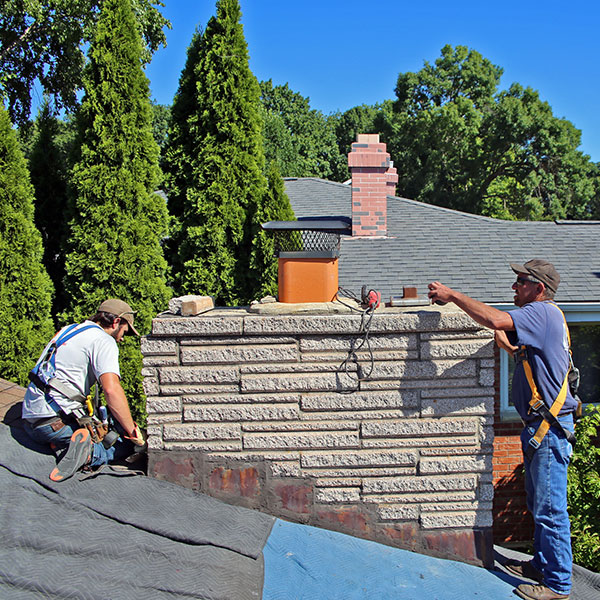Essential Chimney Maintenance San Jose Tips Every Property Owner Must Know
Essential Chimney Maintenance San Jose Tips Every Property Owner Must Know
Blog Article
Professional Tips for Effective Smokeshaft Upkeep You Required to Know
Chimneys work as essential elements in several homes, providing heat and comfort. Guaranteeing their appropriate maintenance is commonly overlooked until issues develop. Recognizing the intricacies of chimney care can be the key to avoid pricey fixings and safeguarding your home and household. From the importance of regular evaluations to risk-free functional practices, a detailed technique to smokeshaft maintenance is crucial. Let's check out specialist tips that can help you maintain your smokeshaft in optimum problem for many years to find.
Importance of Normal Examinations
Regular examinations of smokeshafts are essential for ensuring their safety and security and performance. Smokeshafts play an essential role in airing vent out dangerous gases and maintaining correct air flow in a home. In time, creosote build-up, debris, and architectural damage can take place within the chimney, posturing severe risks such as chimney fires or carbon monoxide leakages.
During a chimney inspection, educated experts analyze the problem of the smokeshaft, looking for any kind of indicators of damage, obstructions, or deterioration. They also check the honesty of the flue, chimney lining, and smokeshaft cap to make sure everything is in correct functioning order. By identifying and attending to issues early, potential dangers or expensive repairs can be prevented.
Normal inspections not only help in preserving the safety and security of the chimney yet also add to its overall efficiency. A well-maintained and tidy smokeshaft runs more properly, ensuring correct ventilation and reducing the risk of indoor air contamination. Organizing annual smokeshaft examinations is an aggressive measure that house owners can take to secure their building and liked ones.
Cleaning Methods and Frequency
Keeping the security and performance of a smokeshaft entails not just normal assessments yet additionally applying proper cleansing techniques and determining the optimum regularity for cleaning. Chimneys should be cleansed by an expert chimney sweep at least yearly, also if they are not often used. Nevertheless, if the smokeshaft is utilized on a regular basis, particularly with wood-burning ranges or fireplaces, it might require even more constant cleansings to prevent the accumulation of creosote, a highly flammable substance that can bring about chimney fires.
House owners must never disregard smokeshaft cleansing, as it is crucial for maintaining a useful and safe chimney system. Routine cleansings not just minimize the danger of smokeshaft fires but also improve the chimney's general efficiency and long life.
Resolving Smokeshaft Leaks

When resolving smokeshaft leaks, detailed evaluation and prompt fixings are vital to stop water damages and keep the structural honesty of the smokeshaft. Leaks in a chimney can result in significant problems such as mold and mildew development, degeneration of the chimney framework, and also potential fire hazards. To efficiently resolve chimney leaks, start by inspecting the smokeshaft cap, crown, flashing, and masonry for any indicators of damage or wear. Chimney caps need to be securely in location to avoid water from getting in, while the crown and flashing ought to be undamaged and properly secured. Any cracks or voids in the stonework should be fixed without delay to stop water infiltration. Furthermore, think about waterproofing the chimney to offer an additional layer of defense against dampness. Routine maintenance and inspections can aid spot and attend to smokeshaft leaks early, conserving you from pricey repairs and guaranteeing the security and longevity of your chimney.
Comprehending Creosote Build-Up
To recognize the prospective threats of creosote build-up in smokeshafts, it is important to acknowledge its development procedure and influence on smokeshaft performance. Web Site Creosote is a black or brown tar-like material that accumulates inside smokeshaft systems when wood or nonrenewable fuel sources are shed. As smoke rises through the chimney, it cools and condenses, bring about the formation of creosote, which sticks to the smokeshaft walls.

Routine chimney examinations and cleanings by a professional chimney sweeper are critical in avoiding creosote build-up and guaranteeing the risk-free procedure of your smokeshaft system.
Safe Procedure Practices
Executing proper safety More Help and security procedures is vital for the effective and safe and secure procedure of chimney systems. Constantly ensure that the chimney is skillfully checked and cleaned up routinely to eliminate any kind of creosote build-up, which can lead to chimney fires.
Additionally, ensure to only shed experienced wood in your fireplace, as eco-friendly or damp wood can generate even browse around this web-site more creosote and trigger unsafe chimney blockages. Lastly, never leave a fire neglected and always ensure the fire is totally extinguished prior to going to sleep or leaving your home. By complying with these safe operation techniques, you can appreciate a cozy and relaxing fire while guaranteeing the security of your home and liked ones.
Verdict
In final thought, maintaining your chimney is crucial for guaranteeing its safety and security and efficiency. Routine assessments, proper cleansing methods, dealing with leaks, managing creosote accumulation, and complying with risk-free procedure techniques are crucial facets of smokeshaft maintenance.
Over time, creosote build-up, debris, and architectural damages can occur within the chimney, posturing serious threats such as smokeshaft fires or carbon monoxide leaks.
If the chimney is utilized routinely, specifically with wood-burning cooktops or fireplaces, it may require even more regular cleansings to prevent the accumulation of creosote, an extremely flammable substance that can lead to smokeshaft fires. (Chimney Maintenance San Jose)
To recognize the possible dangers of creosote accumulation in chimneys, it is crucial to identify its development process and effect on chimney performance. As smoke rises through the chimney, it cools and condenses, leading to the formation of creosote, which sticks to the smokeshaft walls.
Always ensure that the chimney is skillfully evaluated and cleansed on a regular basis to remove any type of creosote accumulation, which can lead to smokeshaft fires.
Report this page